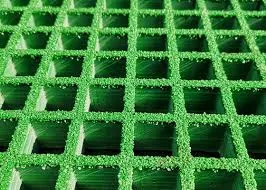
-
 Afrikaans
Afrikaans -
 Albanian
Albanian -
 Amharic
Amharic -
 Arabic
Arabic -
 Armenian
Armenian -
 Azerbaijani
Azerbaijani -
 Basque
Basque -
 Belarusian
Belarusian -
 Bengali
Bengali -
 Bosnian
Bosnian -
 Bulgarian
Bulgarian -
 Catalan
Catalan -
 Cebuano
Cebuano -
 China
China -
 China (Taiwan)
China (Taiwan) -
 Corsican
Corsican -
 Croatian
Croatian -
 Czech
Czech -
 Danish
Danish -
 Dutch
Dutch -
 English
English -
 Esperanto
Esperanto -
 Estonian
Estonian -
 Finnish
Finnish -
 French
French -
 Frisian
Frisian -
 Galician
Galician -
 Georgian
Georgian -
 German
German -
 Greek
Greek -
 Gujarati
Gujarati -
 Haitian Creole
Haitian Creole -
 hausa
hausa -
 hawaiian
hawaiian -
 Hebrew
Hebrew -
 Hindi
Hindi -
 Miao
Miao -
 Hungarian
Hungarian -
 Icelandic
Icelandic -
 igbo
igbo -
 Indonesian
Indonesian -
 irish
irish -
 Italian
Italian -
 Japanese
Japanese -
 Javanese
Javanese -
 Kannada
Kannada -
 kazakh
kazakh -
 Khmer
Khmer -
 Rwandese
Rwandese -
 Korean
Korean -
 Kurdish
Kurdish -
 Kyrgyz
Kyrgyz -
 Lao
Lao -
 Latin
Latin -
 Latvian
Latvian -
 Lithuanian
Lithuanian -
 Luxembourgish
Luxembourgish -
 Macedonian
Macedonian -
 Malgashi
Malgashi -
 Malay
Malay -
 Malayalam
Malayalam -
 Maltese
Maltese -
 Maori
Maori -
 Marathi
Marathi -
 Mongolian
Mongolian -
 Myanmar
Myanmar -
 Nepali
Nepali -
 Norwegian
Norwegian -
 Norwegian
Norwegian -
 Occitan
Occitan -
 Pashto
Pashto -
 Persian
Persian -
 Polish
Polish -
 Portuguese
Portuguese -
 Punjabi
Punjabi -
 Romanian
Romanian -
 Russian
Russian -
 Samoan
Samoan -
 Scottish Gaelic
Scottish Gaelic -
 Serbian
Serbian -
 Sesotho
Sesotho -
 Shona
Shona -
 Sindhi
Sindhi -
 Sinhala
Sinhala -
 Slovak
Slovak -
 Slovenian
Slovenian -
 Somali
Somali -
 Spanish
Spanish -
 Sundanese
Sundanese -
 Swahili
Swahili -
 Swedish
Swedish -
 Tagalog
Tagalog -
 Tajik
Tajik -
 Tamil
Tamil -
 Tatar
Tatar -
 Telugu
Telugu -
 Thai
Thai -
 Turkish
Turkish -
 Turkmen
Turkmen -
 Ukrainian
Ukrainian -
 Urdu
Urdu -
 Uighur
Uighur -
 Uzbek
Uzbek -
 Vietnamese
Vietnamese -
 Welsh
Welsh -
 Bantu
Bantu -
 Yiddish
Yiddish -
 Yoruba
Yoruba -
 Zulu
Zulu
Innovative Designs and Benefits of Fiberglass Cars in Modern Automotive Industry
The Rise of Fiberglass Cars A Revolution in Automotive Design
In the automotive world, innovation is the key to survival. Among the myriad materials used in car manufacturing, fiberglass has emerged as a game-changer, revolutionizing the design and production of vehicles. This lightweight, durable material has transformed the landscape of the automobile industry, enabling manufacturers to create cars that are not only aesthetically pleasing but also efficient and sustainable.
Fiberglass, a composite material made from glass fibers and resin, was first developed in the 1930s. Its initial use was primarily in industrial applications, but it didn’t take long for engineers and designers to recognize its potential in automotive manufacturing. The key advantages of fiberglass include its low weight, resistance to corrosion, and high strength-to-weight ratio. These characteristics help car manufacturers improve fuel efficiency while maintaining safety standards.
The iconic Chevrolet Corvette, introduced in 1953, is one of the first mass-produced cars to feature a fiberglass body. This groundbreaking design not only showcased the material's aesthetic potential but also marked the beginning of a new era in sports car manufacturing. The lightweight structure of the Corvette allowed for faster speeds and better handling, setting a precedent for future sports cars. Following this success, other manufacturers began adopting fiberglass in their designs, leading to a surge in fiberglass-bodied vehicles throughout the 1960s and 1970s.
The advantages of fiberglass go beyond performance. The material is also highly versatile and can be molded into complex shapes, providing designers with the freedom to create unique vehicle structures that were previously impossible to achieve with metal. This has led to an array of innovative designs, from sleek, aerodynamic bodies to rugged, off-road vehicles. Additionally, fiberglass can be produced in various colors, eliminating the need for painting and further reducing production costs.
fiberglass car

Environmental concerns have also played a significant role in the resurgence of fiberglass in the automotive industry. With the growing awareness of climate change and the need for sustainable practices, manufacturers are increasingly looking for ways to reduce their carbon footprint. Fiberglass vehicles are lighter, which means they consume less fuel and emit fewer greenhouse gases. Moreover, the longevity of fiberglass components (which do not rust or corrode) contributes to a car's overall durability, aligning with the industry’s move towards more sustainable practices.
However, the use of fiberglass in automotive manufacturing is not without its challenges. While the material offers numerous benefits, it is more expensive than traditional steel, which can deter some manufacturers. Additionally, the production and disposal of fiberglass can raise environmental concerns of their own, as the curing agents and resins used in its production are often hazardous. Nevertheless, as the industry continuously innovates, advancements in recycling techniques and sustainable production methods are being developed, potentially mitigating these issues.
Today, the revival of interest in classic cars is breathing new life into the fiberglass car market. Enthusiasts and collectors are increasingly seeking out vintage fiberglass models, forcing manufacturers to reconsider and revive iconic designs. This resurgence not only validates the craftsmanship and innovative spirit of the era but also sparks interest in the potential of modern fiberglass applications.
In conclusion, fiberglass has undeniably left a lasting impact on the automotive industry. As manufacturers continue to explore its potential, the future of fiberglass cars looks bright. They combine style, performance, and sustainability, appealing to a new generation of drivers and collectors. As we navigate through a rapidly changing world, the story of fiberglass cars serves as a reminder of how innovation and tradition can coexist, paving the way for a more sustainable and exciting automotive future. Whether you are an enthusiast or a casual observer, the evolution of fiberglass cars is worth watching as it shapes the cars of tomorrow.









